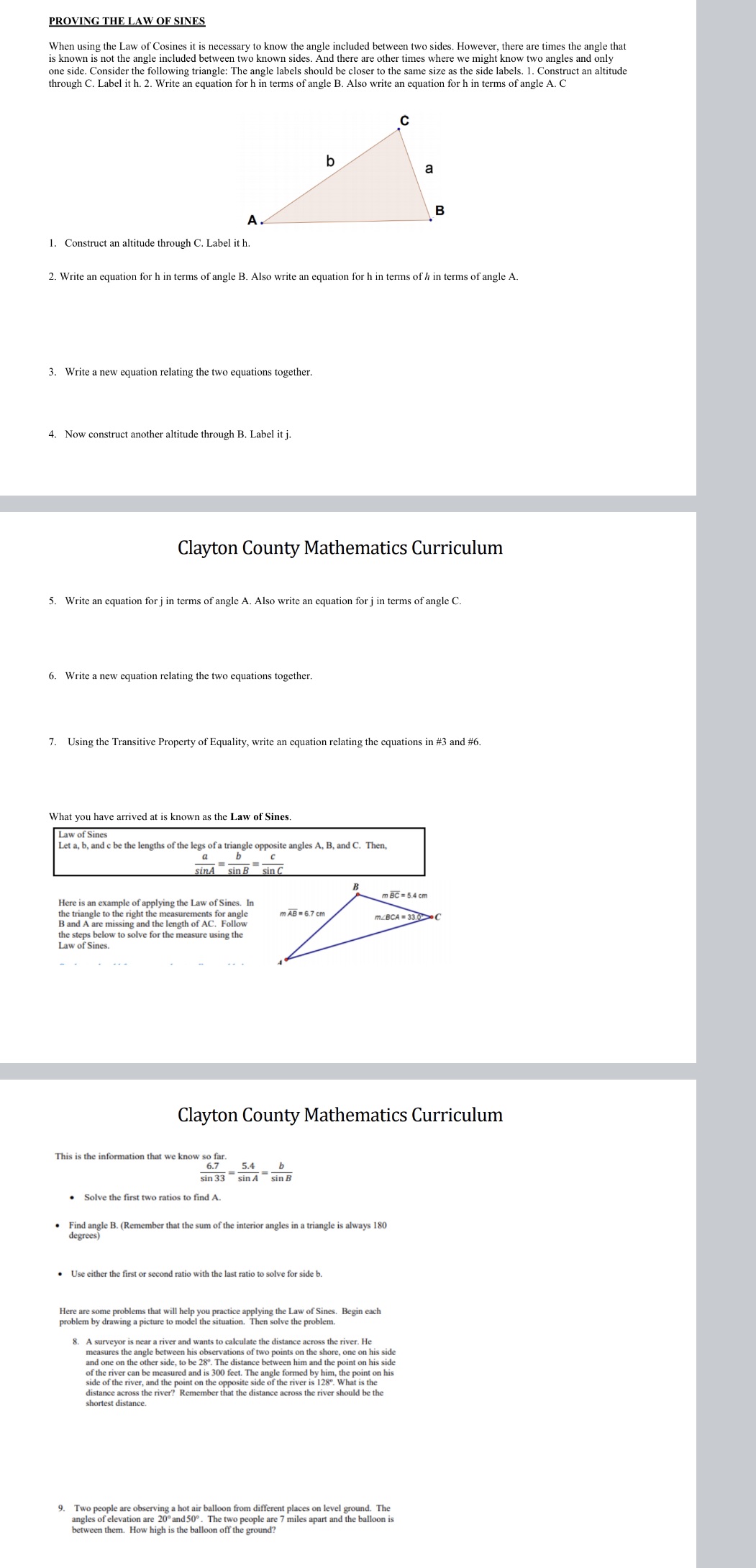
PROVING THE LAW OF SINES When using the Law of Cosines it is necessary to know the angle included between two sides. However, there are times the angle that is known is not the angle included between two known sides. And there are other times where we might know two angles and only one side. Consider the following triangle: The angle labels should be closer to the same size as the side labels. 1. Construct an altitude through C. Label it h. 2. Write an equation for h in terms of angle B. Also write an equation for h in terms of angle A. C C b a B 1. Construct an altitude through C. Label it h. 2. Write an equation for h in terms of angle B. Also write an equation for h in terms of h in terms of angle A. 3. Write a new equation relating the two equations together. 4. Now construct another altitude through B. Label it j. Clayton County Mathematics Curriculum 5. Write an equation for j in terms of angle A. Also write an equation for j in terms of angle C. 6. Write a new equation relating the two equations together. 7. Using the Transitive Property of Equality, write an equation relating the equations in #3 and #6. What you have arrived at is known as the Law of Sines. Law of Sines Let a, b, and c be the lengths of the legs of a triangle opposite angles A, B, and C. Then, a b c sinA sin B sin C mBC = 5.4 cm Here is an example of applying the Law of Sines. In the triangle to the right the measurements for angle m AB = 6.7 cm m/BCA = 33.> C B and A are missing and the length of AC. Follow the steps below to solve for the measure using the Law of Sines. Clayton County Mathematics Curriculum This is the information that we know so far. 6.7 5.4 sin 33 sin A sin B . Solve the first two ratios to find A. Find angle B. (Remember that the sum of the interior angles in a triangle is always 180 degrees) Use either the first or second ratio with the last ratio to solve for side b. Here are some problems that will help you practice applying the Law of Sines. Begin each problem by drawing a picture to model the situation. Then solve the problem. 8. A surveyor is near a river and wants to calculate the distance across the river. He measures the angle between his observations of two points on the shore, one on his side and one on the other side, to be 28". The distance between him and the point on his side of the river can be measured and is 300 feet. The angle formed by him, the point on his side of the river, and the point on the opposite side of the river is 128". What is the distance across the river? Remember that the distance across the river should be the shortest distance. 9. Two people are observing a hot air balloon from different places on level ground. The angles of elevation are 20 and 50. The two people are 7 miles apart and the balloon is between them. How high is the balloon off the ground








